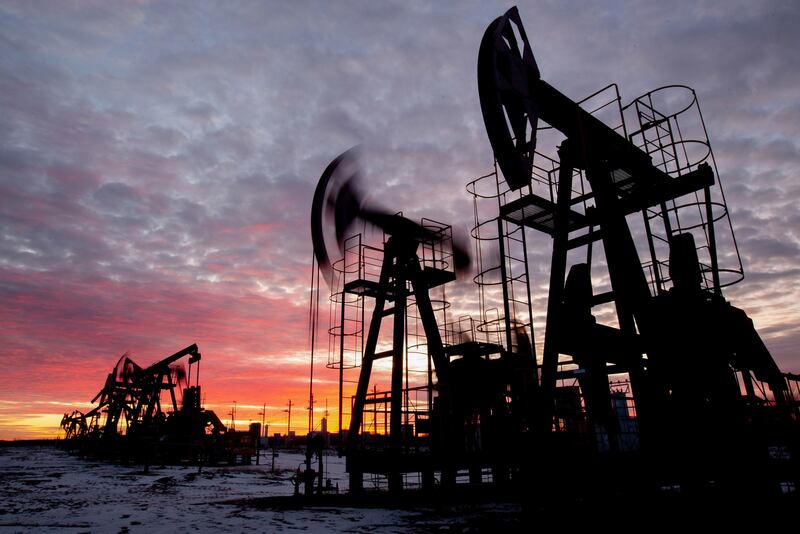Oil prices extended their gains on Wednesday following a more than 3 per cent surge the previous day as the latest data from the US showed inflation in the world's largest economy cooled, signalling an expected pause in the tightening cycle of the Federal Reserve, while China’s central bank cut its short-term policy rate.
Brent, the benchmark for two thirds of the world’s oil, was trading 1.59 per cent higher at $75.43 a barrel at 2.58pm UAE time. West Texas Intermediate, the gauge that tracks US crude, was up 1.51 per cent at $70.47 a barrel.
On Tuesday, Brent settled 3.41 per cent higher at $74.29 while WTI was up 3.43 per cent at $69.42.
China’s central bank cut a key short-term lending rate for the first time in 10 months after disappointing economic data.
The People’s Bank of China lowered its seven-day reverse repo rate by 10 basis points to 1.9 per cent, from 2 per cent.
The “surprise cut … sent a message to traders that the world’s second-largest economy is finally going to get significant stimulus that should help with their struggling post-Covid recovery”, said Edward Moya, a senior market analyst at Oanda.
The latest inflation report from the US “sealed the deal” for the Fed to skip an interest rate raise when it concludes a two-day meeting on Wednesday, Mr Moya said.
The US consumer price index slowed to an annual 4 per cent in May, from 4.9 per cent in April, the lowest level since March 2021. Meanwhile, core inflation, which excludes food and energy, softened to 5.3 per cent, from 5.5 per cent.
Higher interest rates could slow the global economy and dampen crude demand. The Fed raised interest rates by a combined 500 basis points since it started increasing rates in March 2022.
It is widely expected to hold off on further increases to assess the effects of its monetary tightening on the economy.
“The disinflation process remains intact and that could mean the dollar’s days are numbered, which would provide some support for oil prices,” Mr Moya said.
The US Dollar Index – a measure of the value of the greenback against a weighted basket of major currencies – has fallen by about 1 per cent over the past week.
Futures also gained on a Bloomberg report that said the US plans to buy about 12 million barrels of oil this year as it begins to refill its emergency crude stockpile.
The figure includes 3 million barrels already scheduled for delivery in August and an additional 3 million barrels from a solicitation, Bloomberg reported, citing sources.
Meanwhile, US crude stocks, an indicator of fuel demand, rose by a million barrels last week, along with increases in petrol and distillate inventories, according to the American Petroleum Institute.
Opec has again raised its 2023 oil demand growth forecast for top crude importer China and said the recent economic slowdown in the country may persist until the middle of the year.
In its monthly market report, the group maintained its global oil demand growth forecast of 2.3 million barrels per day for this year.
“As it seems, China's growth momentum has decelerated in recent months following a robust initial rebound,” Opec said.
“China's post-reopening recovery is forecast to continue. Despite the recent slowdown in activities … key growth drivers could accelerate China's recovery in the second half of the year and beyond.”
A recovery in Asia's crude demand and Opec+ production cuts are expected to tighten crude supply in the second half of the year.






